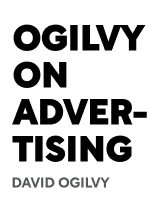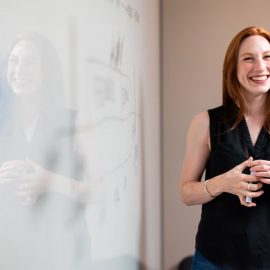

This article is an excerpt from the Shortform book guide to "Ogilvy On Advertising" by David Ogilvy. Shortform has the world's best summaries and analyses of books you should be reading.
Like this article? Sign up for a free trial here .
What are corporate ads? Are thy just there to serve as a branding strategy or can they do more?
Corporate ads focus on advertising the company separately from its products or services. Companies might use corporate ads to impress investors, boost morale, attract talent and more.
Read more about corporate ads and how they work.
Specific Types of Advertising: Corporate Ads
Corporate ads are a type of advertising that can work for companies to build brand loyalty, recruit talent, and more. Read this explanation on corporate ads, as well as these corporate advertising examples.
Type #1: Corporate Advertising
Corporate advertising is advertising a company separately from its products or services. This type of advertising can help companies:
- Increase employee morale. People like it when other people have heard of the company they work for.
- Improve public opinion. People who know more about companies are likely to have better opinions of them.
- Recruit top talent. People need to know your company exists to want to work for it.
- Win takeover bids. Companies with good images are more likely to be chosen.
- Impress investors. For example, a Northwestern University study found that on average, corporate advertising improved stock prices by 2%.
Getting these benefits requires a long-term commitment.
Here are corporate advertising examples:
- Example #1: When public opinion of Texaco dropped because someone accused them of selling to Nazis, they ran radio ads that told people they sponsored the Metropolitan Opera. It took a long time to change their image from conspirators to arts supporters.
- Example #2: DuPont has been advertising itself for 47 years.
When creating corporate advertising, use the guidelines in previous chapters, and avoid the following specific pitfalls and the corporate advertising examples:
- Bad crafting. Many companies choose interchangeable slogans and place them at the bottom of ads, where no one looks.
- For example, the slogan “THE company” could refer to any company in the world. (It belonged to Textron.)
- Underfunding. Often, the CEO is the only person at a company who supports corporate advertising, and everyone else wants to spend its budget for advertising products instead. The best way to allocate funding is to first figure out a goal and then figure out how much it will cost to achieve.
- Under-researching. Many corporate campaigns don’t receive the same amount of research as product campaigns.
- Limited media. Some companies don’t use TV, and this decreases their reach.
- CEO appearances. CEOs aren’t trained announcers and may not be as well-spoken as an actor.
- Use of initials. If you reduce your company name to initials, people won’t know what the letters stand for or might mistake your company for someone else.
- For example, both Brown Boveri and British Broadcasting use BBC.

———End of Preview———
Like what you just read? Read the rest of the world's best book summary and analysis of David Ogilvy's "Ogilvy On Advertising" at Shortform .
Here's what you'll find in our full Ogilvy On Advertising summary :
- What the "father of advertising" has learned from his decades' of experience
- How to craft easy-to-understand ads that work
- The 6 pioneers of the advertising industry






